|
|
Brief
description of how the Kiln
would work at the Crossroads Pottery. |
(with thanks to
Clive Daniels for the illustrations.)
The circular kiln was built
in a large earth mound and the kiln chamber resembled a well
made of bricks. The firing chamber was under the
well and had one fire mouth. The floor of the well was
perforated to allow the flames through to the pots.
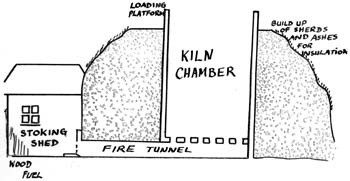
The
original 15 feet diameter kiln was on the site of April
Cottage (Now demolished) situated on land to the west of the Heritage Centre
which is now occupied with new shops including COSTA Coffee.
The kiln was stacked from the
top, the operator climbing down a ladder inside and
receiving the pots from another operator outside. As the
pots were usually glazed only on the inside, smaller ones
could be stacked upside down inside larger ones.
Thus little kiln space was wasted. The pots were stacked on
top of one another to the top of the kiln, which was then
covered with sherds.
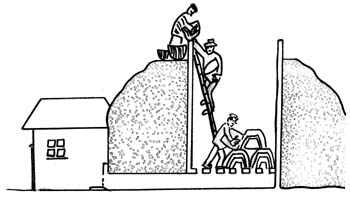
The
kiln was first stacked from the top with smaller pots being
placed inside larger ones.
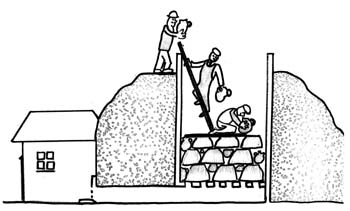
The
skill was to systematically stack the kiln as shown.
The fuel used was wood, and
firing took up to three days and nights beginning with a
small fire and gradually building it up to get more heat.
During this time the fire needed constant attention and
towards the end of the firing faggots and gorse were put on
to clear the fire and flux the glaze (flashing).
No aids were used to
determine the kiln temperature, this being determined-by the
skill and experience- of the potter. When the
required temperature was reached certain bricks in the side
of the kiln were watched carefully until they attained a
recognised redness of heat, or until the sherds at the top
of the kiln became coated yellow. One pot was then removed
with a piece of iron with a hook on the. end, for testing.
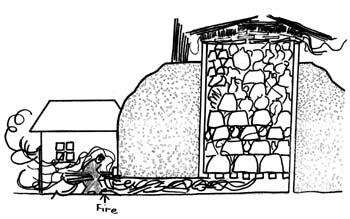
The kiln
was wood fired and this firing took 2 days and 2 nights.
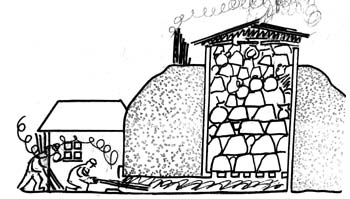
The
third day was spent "burning off in order to 'flash'
the glaze.
The kiln was then cooled gradually by blocking up
the entrance to the firing chamber, leaving a very small
hole. When the fire had been let out the kiln was left for
two or three days to cool before it was emptied.
|